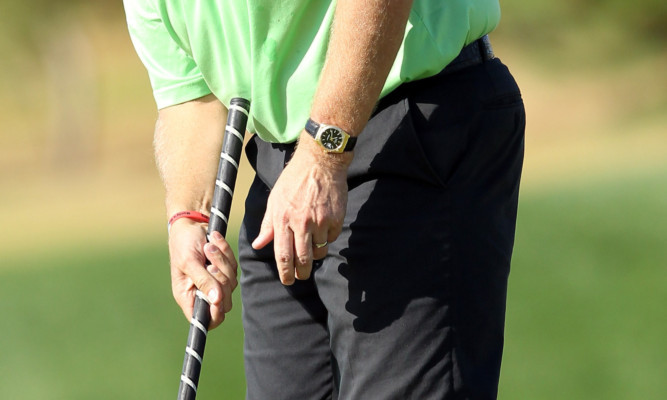The PGA Tour will not be playing to the Rules of Golf if they try to defy or circumvent the ban on the anchoring of strokes confirmed by the R&A and USGA.
The two governing bodies have agreed to approve the adoption of Rule 14-1b banning the anchored stroke mostly used with long or belly putters without any alteration to their original wording after a 90-day “comment” period which saw opposition from the game’s biggest professional circuit, the PGA Tour, and from the United States’ organisation of club professionals, the PGA of America.
In what has become a canny game of move and countermove, the PGA Tour announced on Tuesday that it would “begin our process to ascertain whether the various provisions of Rule 14-1b will be implemented in our competitions”.
That suggests the PGA Tour believe they can retain anchoring but the idea they could do so by adoption of a local rule was dismissed by R&A chief executive Peter Dawson.
“It wouldn’t be a Rule of Golf, because the governing bodies have decided what’s going to happen with the rules of the game and we think that’s what’s going to stick,” he said at Wentworth on Tuesday, while underlining the governing bodies’ support for the ban and their opposition to bifurcation the making of differing sets of rules for the elite and recreational golf.
Mr Dawson said: “I know they (the Tour) have a process to go through, and I’ve no doubt they will go through it, but I can’t say how that will happen.”
Of all the 450 representations made to the R&A during the comment period the USGA, which governs the US and Mexico, received 2200 Dawson said only one, the proposal to “grandfather” the rule allowing those players already utilising anchored strokes to continue to do so until retirement, had been unexpected. “And we soon talked ourselves out of thinking that was a good idea,” he added.
Dawson also rejected the assertion that it had been the flux of major winners that had forced the ban to the forefront.
“I know this has been reported a number of times, but the Major winners have not really played a part in this debate,” he continued. “It’s been numbers of players anchoring and youngsters starting out, far more than the actual results of individual players.
“The increase in usage on Tour and reports of youngsters coming into the game and starting out with the anchored stroke caused the subject to come into focus.
“In the 600-year or so history of the game, it has quite often taken some time for rules to be changed and certain practices to be examined and opinions formed.
“I think that’s been the case this time, but it certainly was accelerated by the spiking on Tour. We saw some Tour events where 26% of players were actually anchoring, and the reports of college coaches and coaches of children coming into the game proposing this method all of that brought it back into focus.”
The R&A now believe that the ethos of the game will police the new rule and hope that the general belief that “golf is best served by adherence to a single set of worldwide rules” will hold sway and there will be no legal challenges to the rule.
